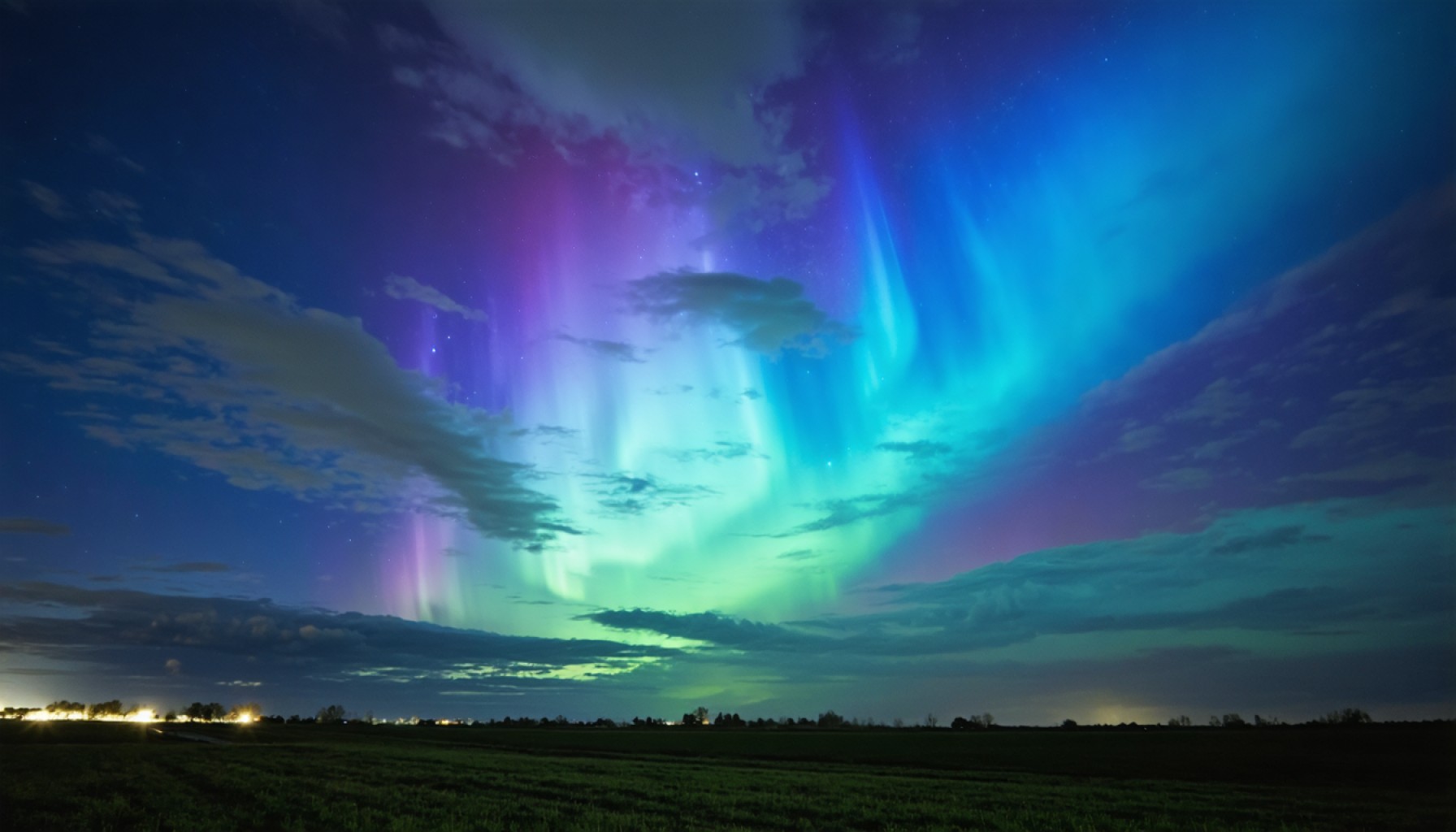- The northern lights made an unexpected appearance over Georgia due to a G5 Geomagnetic Storm on May 10, 2024.
- This rare celestial event was caused by the sun reaching the peak of its 11-year solar cycle, sending charged particles toward Earth.
- Regions not usually associated with the auroras, like Georgia, experienced vibrant displays of scarlet, violet, and emerald hues.
- Past events of this magnitude, such as the “Great Halloween Solar Storm” of 2003, are infrequent, making this sight truly special.
- Experts expect more geomagnetic activity as the sun remains active, potentially bringing more such displays in non-polar areas.
- The occurrence is a reminder of Earth’s connection with the sun, showcasing the universe’s unpredictable wonders.
Blazing hues of scarlet, violet, and emerald lit up the Southern evening as the northern lights made an extraordinary appearance over Georgia. This celestial dance was not simply a local event; it was a sensational showcase of the universe’s wild artistry due to a G5 Geomagnetic Storm that swept across the United States on May 10, 2024. For skywatchers from Atlanta to the hills of north Georgia, it was a once-in-a-lifetime spectacle, cascading dazzling waves across a realm not typically graced by such wonders.
The phenomenon was the result of the sun’s mischievous temperament. As it reached the zenith of its 11-year solar cycle, the fiery star hurled charged particles towards Earth, unleashing a geomagnetic tempest that painted the skies in vibrant shades typically witnessed only near the poles. While Alaska and Norway might yawn at this nocturnal display, Georgia—and indeed much of the continent—was set aglow in an ethereal embrace that hadn’t been seen since the “Great Halloween Solar Storm” of 2003.
Viewers, breath-bated, documented the spectacle, submitting snapshots that captured the surreal allure of the lights dancing across familiar landscapes. North Georgia, fleetingly transformed into a realm of otherworldly wonder, drew comparisons to regions far beyond the Mason-Dixon Line.
The occurrence serves as a potent reminder of Earth’s delicate connection with its solar companion, that vast fiery orb whose whims can reach out and touch us. With the sun currently at its most active, experts promise more celestial displays, transforming usually dormant skies into vibrant canvases. So as our planet twirls onward, we remain spectators in an astronomical ballet, poised for the next act of solar choreography.
This natural marvel teaches us to embrace the unexpected, reminding us that the universe, with its boundless imagination, can surprise us when we least expect it. Keep looking up; you never know when the cosmos will stage its next luminous encore.
Unlocking the Mysteries Behind the Georgia Northern Lights: What You Need to Know
Exploring the Rare Appearance of the Northern Lights Over Georgia
The recent celestial spectacle that illuminated Georgia’s skies is an example of how our universe can surprise us in dazzling ways. Here’s a deeper dive into this rare phenomenon, including what caused it, its implications, and what we can anticipate in the near future.
The Science Behind the Sight
The extraordinary appearance of the northern lights over Georgia was primarily due to a G5 Geomagnetic Storm, the most severe category on the geomagnetic scale. This phenomenon resulted from the sun reaching a peak period in its 11-year solar cycle, a phase marked by heightened solar activity. During this time, the sun emits charged particles known as a solar wind, which, upon interacting with Earth’s magnetic field, lead to dazzling auroras.
These blinking sheets of color are more common near the polar regions, where the magnetic field lines converge. However, when a high-intensity storm like this occurs, the lights can extend towards the equator, bringing the spectacle to unexpected regions like Georgia.
How-To Steps to Experience the Best of Northern Lights
1. Stay Informed: Use apps like Aurora Forecast or websites such as the National Oceanic and Atmospheric Administration’s (NOAA) Space Weather Prediction Center to stay updated on aurora forecasts.
2. Choose the Right Spot: Find a location away from city lights. Ideally, a hill or flat open area such as a field provides a vast view of the sky.
3. Timing is Key: The best viewing times are typically between 10 PM and 2 AM.
4. Camera Settings: Use a tripod and adjust your camera to a high ISO setting with a long exposure to capture the lights.
Real-World Use Cases & Market Forecasts
The fascination with natural phenomena like auroras has spurred growth in astro-tourism, whereby travelers intentionally seek out locations with optimal conditions for stargazing. As solar activity increases, areas in the Northern Hemisphere, traditionally hidden from such spectacles, may experience a spike in tourism.
Controversies & Limitations
While the beauty of the northern lights is undeniable, there’s an ongoing debate about the effects of geomagnetic storms on technology and wildlife. These storms have the potential to disrupt GPS systems, satellites, and power grids. Furthermore, anecdotal reports suggest that the disruptions could impact animal migration patterns, leading to ecological concerns.
Expert Insights & Predictions
Experts predict that as the sun remains active, we might continue to see similar occurrences. According to Dr. Tamitha Skov, a noted space-weather physicist, the next few years could bring heightened solar activity, making rare southern auroras more common.
Actionable Recommendations
– Stay Informed: Sign up for alerts from space weather agencies to never miss out on future light shows.
– Astrophotography: Enhance your photography skills with online courses to capture meaningful memories of celestial events.
– Stargazing Gear: Invest in binoculars or telescopes to make the most of any astronomical event.
For more information about space and astronomical phenomena, visit the NOAA.
Conclusion
The rare northern lights over Georgia serve as a stunning reminder of the universe’s wonders. By understanding such phenomena and planning ahead, you can ensure you’re ready for the next celestial showcase. Whether you’re an astronomy enthusiast or simply curious about the skies, keep looking up!
